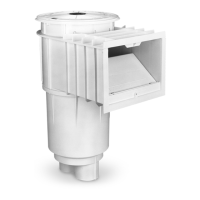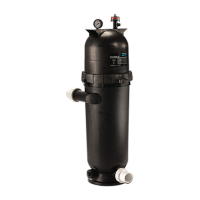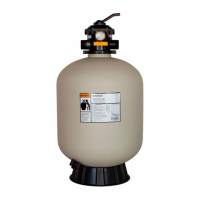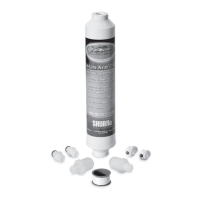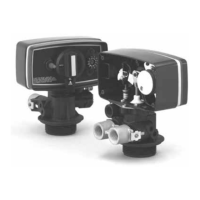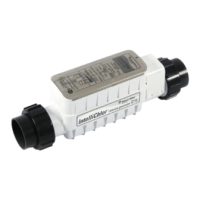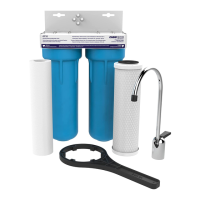11
English
How Much Salt to Use?
FOR ALL NEWLY CONSTRUCTED OR RESURFACED PLASTER POOLS: Do not operate the SC-75 with newly poured
or resurfaced pool plaster. Salt is a corrosive element and severe salt damage can occur to your pool. Wait at
least ONE (1) MONTH aer construcon to allow plaster to cure before adding salt and operang SC-75. Follow the pool
surface manufacturer’s guidelines for your specic pool.
FOR NEW VINYL LINER POOLS, contact the manufacturer for recommended guidelines before adding salt and operang SC-75.
Use the Table 1 chart to determine how much salt will be needed. Most pools contain some salt, depending on the water
source and chemicals used for sanizing. Therefore, the pool owner must always test salt levels before adding salt. A hand
held meter calibrated for NaCl (salt) can be used to determine the salt levels of the pool water. Aer the SC-75 Salt Chlorinator
is powered on, the LED salt level lights will blink from boom to top for two (2) minutes while it analyzes the pool water,
then the LED indicators will show one (1) of four (4) salt level ranges. This solid light indicates the salt status of the pool.
• 3000 to 3500 ppm of salt is recommended for opmum water condions.
• Low salt concentraon below 2600 ppm will cause the unit to turn o
• High salt concentraon above 4500 ppm may cause excessive corrosion or deterioraon to pool equipment and
surrounding surfaces in and around the pool.
Note: Salt measurements will vary between measuring devices (salt test strips, electronic testers, and traon). The salt sensor
reading is within +/- 500 ppm accuracy. For more troubleshoong informaon about high salt levels, see “Troubleshoong”.
Calculang the Saturaon Index
The saturaon index is a formula that relates pH, calcium and alkalinity in the pool water. A well balanced pool water will
have a formula result range between -0.3 and 0.3 Outside this range, the pool water is out of balance, potenally damaging
pool equipment or scaling the SC-75. The equaon to calculate Si is:
SI = pH + CHF + AF + TF + TDSF
Saturaon pH as Calcium Alkalinity Temperature TDS
Index tested Hardness Factor Factor Factor
Factor
Cyanuric acid in the form of cyanurate ions contribute to alkalinity. Thus, a correcon must be made to total alkalinity. We
subtract 1/3 of the cyanuric acid level from the reading obtained in the total alkalinity test.
Total Alkalinity - 1/3 Cyanuric Acid = Corrected Alkalinity
This correcon can be considerable in established pools with high cyanuric acid levels; for example, at 240 ppm cyanuric
acid, the correcon amounts to 80 ppm (240 ÷ 3 = 80).
TDS Factor (Factors shown below are based on the actual measured value for the parcular parameter)
TDS Factor
<1000 12.10
1000 12.19
2000 12.29
3000 12.35
4000 12.41
5000 12.44

